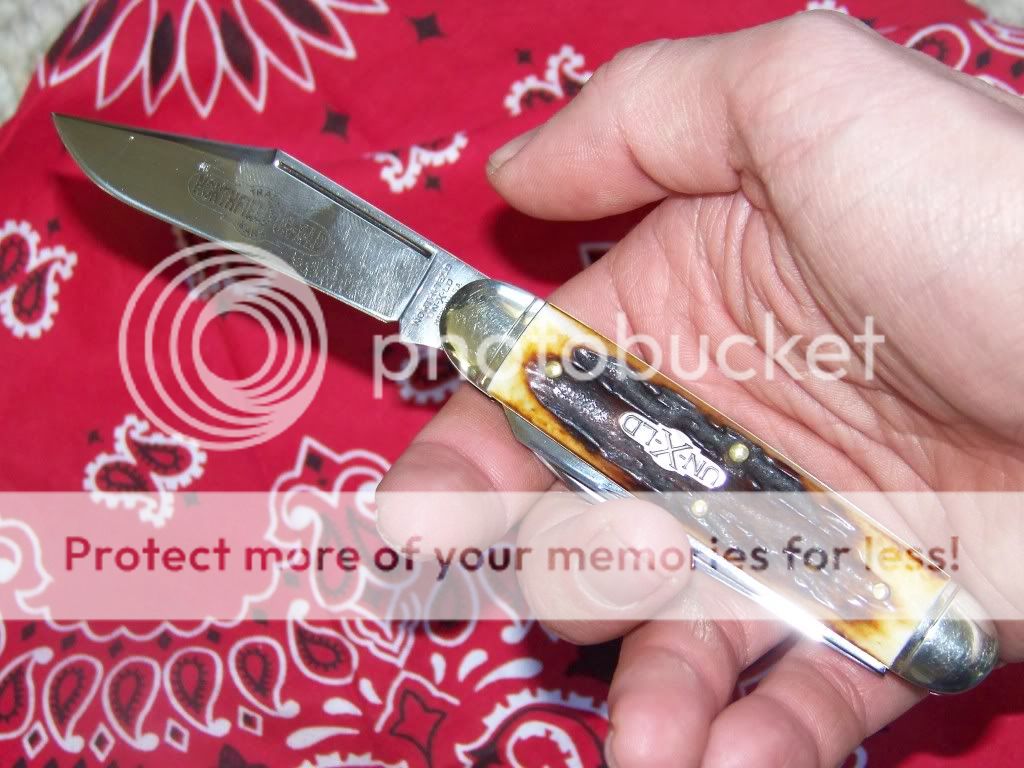crossada
Platinum Member
- Joined
- May 16, 2004
- Messages
- 2,695
I like traditional bowie knives anymore for their use and aesthetics. I get more enjoyment out of using something with natural materials than space age synthetics. Heck i even enjoy rubbing lemon oil into the wood handles on my knives while watching television.
My preferred bowie is a custom i had Matt Lamey make me. It has an 11" blade of 5/16" thick damascus with a distal taper towards the point. It balances at choil area and follows the ounce to inch rule for that "lively feel" He chose to put a nice black walnut handle on it with his standard full hidden tang construction. It also has a full gaurd and sharpened clip for weapon use at which it excels imo. Matt makes one of the best blades around and i feel fortunate to own a piece of art from him. It is paired with a GEC pocket knife to round out the spectrum that can actually be carried anywhere concealed inside the waistband if i so choose. I know this because i have
He chose to put a nice black walnut handle on it with his standard full hidden tang construction. It also has a full gaurd and sharpened clip for weapon use at which it excels imo. Matt makes one of the best blades around and i feel fortunate to own a piece of art from him. It is paired with a GEC pocket knife to round out the spectrum that can actually be carried anywhere concealed inside the waistband if i so choose. I know this because i have

There are better pics showed at Matt's site
http://www.lameycustomknives.com/Site/Bowies & Fighters.html

My preferred bowie is a custom i had Matt Lamey make me. It has an 11" blade of 5/16" thick damascus with a distal taper towards the point. It balances at choil area and follows the ounce to inch rule for that "lively feel"

There are better pics showed at Matt's site
http://www.lameycustomknives.com/Site/Bowies & Fighters.html






